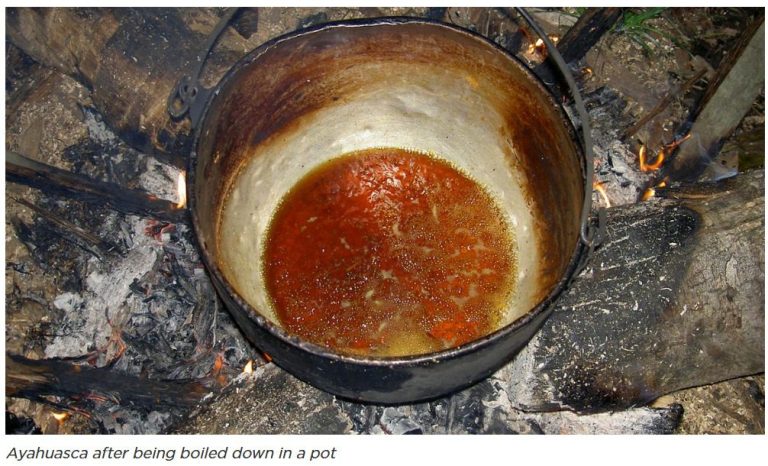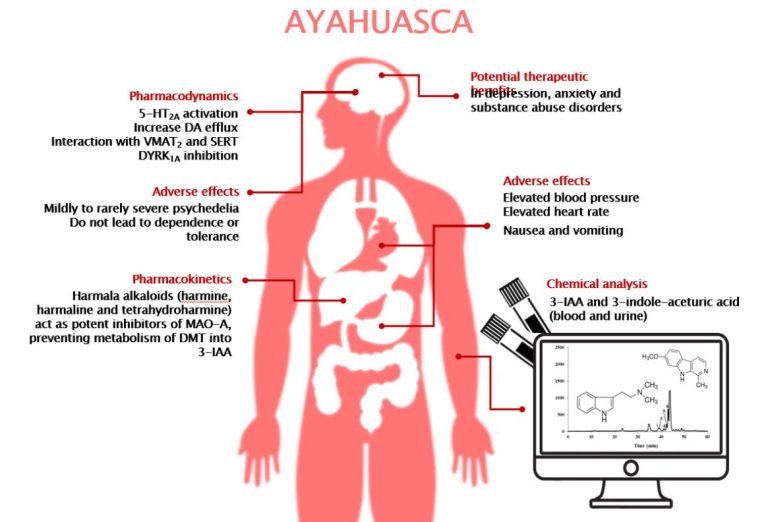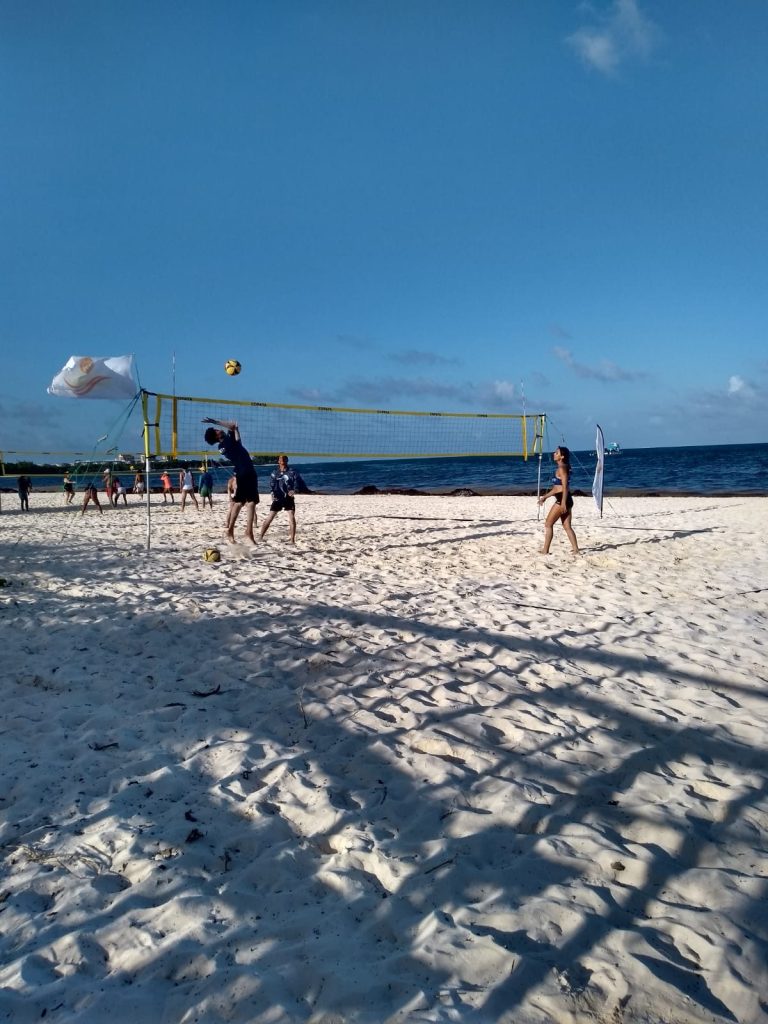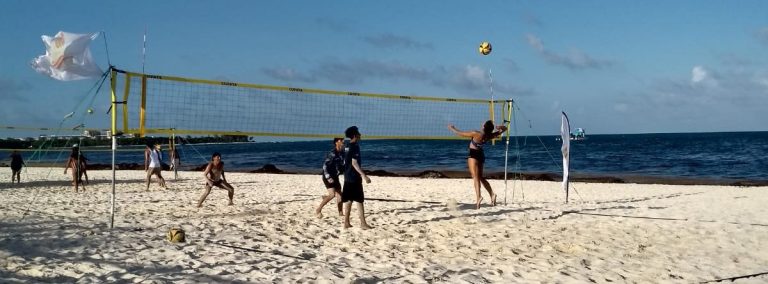“Life is a journey, not a destination.”
Ralph Waldo Emerson, (1803 - 1882)
Report Update

Even during this slow and tough summer season — when Colosio Beach is quiet, covered with sargassum, and good volleyball options are hard to find — our Tuesday sessions keep going strong. Some so-called “volleyball pros” or social groups on Colosio only show up during the busy winter months and tend to exclude locals, but we’re here every Tuesday, rain or shine. That’s what sets Compalaya Volley apart: we’re consistent, reliable, and truly committed to the local community that depends on us for a steady volleyball option.
Our goal is simple: give local players and guests a chance to practice the right way, learn the game properly, and even get professional health support — things many don’t usually have access to. We stay open, welcoming, and focused on helping people improve step by step, not just playing casual games when it’s convenient.
Right now, it’s easy to see who’s serious and who’s just here for fun — many groups disappear once the tourists leave. But for two years, Compalaya Volley has kept the Colosio Beach spot active year-round with a strong social and educational focus. If locals want to learn real, structured volleyball with proper coaching, they know where to go — no strings attached.
This week’s Tuesday session showed that again:
Guests Dominic and Anthony (Puerto Rico) and Ritchie (Germany) quickly adapted to beach volleyball and showed strong skills, joining local regulars Mexicans Gretel, Sergio, and Osiel — who showed how much they’ve grown with smart, tactical play. That’s real beach volleyball — not just hitting the ball around ("ping-pong play"), but playing with a system like the pros.
Coach Michael gave the guests a solid introduction to beach volleyball — how to transition from indoor to sand, with drills focused on reception, passing, and attacking. No shortcuts here — quality is the focus.
On the sideline another support professional Dr. Nicolas (USA), a sports medicine expert, was also on hand offering free health checks and injury advice part of this session program — support many young locals wouldn’t have access to otherwise.
This is what Compalaya Volley is all about: real training, real care, real mentoring, and a community built on respect and the right mindset. You could see it in this session — in the gameplay and in the players themselves.

Incluso durante esta temporada baja lenta y complicada — cuando Playa Colosio está tranquila, cubierta de sargazo y las buenas opciones de voleibol son difíciles de encontrar — nuestras sesiones de los martes siguen fuertes y activas. Algunos supuestos “pros del voleibol” o grupos sociales en Colosio solo aparecen en los meses de invierno, cuando hay más movimiento, y tienden a excluir a los locales, pero nosotros estamos aquí cada martes, llueva o truene. Eso es lo que hace diferente a Compalaya Volley: somos constantes, confiables y realmente comprometidos con la comunidad local que cuenta con nosotros como su opción estable para jugar voleibol.
Nuestro objetivo es simple: dar a los jugadores locales y visitantes la oportunidad de practicar bien, aprender el juego de forma correcta y hasta recibir orientación profesional de salud — cosas a las que muchos normalmente no tienen acceso. Siempre estamos abiertos, dando la bienvenida a todos y enfocados en ayudar a que la gente mejore paso a paso, no solo jugando partidos casuales cuando conviene.
Ahora es muy fácil ver quiénes son realmente serios y quiénes solo están por diversión — muchos grupos desaparecen en cuanto se van los turistas. Pero desde hace dos años, Compalaya Volley ha mantenido activo este espacio en Playa Colosio todo el año con un claro enfoque social y educativo basado en mentoría real. Si los locales quieren aprender voleibol real, estructurado y con entrenadores de verdad, saben a dónde ir — sin condiciones ni pretextos.
La sesión de este martes lo demostró una vez más:
Los invitados Dominic y Anthony (Puerto Rico) y Ritchie (Alemania) se adaptaron rápidamente al voleibol de playa y mostraron grandes habilidades, uniéndose a nuestros regulares locales Gretel, Sergio y Osiel — quienes demostraron cuánto han crecido con un juego inteligente y táctico. Eso es voleibol de playa real — no solo golpear el balón al azar (estilo “ping-pong”), sino jugar con un sistema como lo hacen los profesionales.
El coach Michael dio a los invitados una sólida introducción práctica al voleibol de playa — cómo hacer la transición del indoor a la arena, con ejercicios enfocados en recepción, pase y ataque. Aquí no hay atajos — la calidad es la prioridad.
Al margen, otro apoyo profesional: el Dr. Nicolas (EE. UU.), experto en medicina deportiva, estuvo presente ofreciendo revisiones de salud gratuitas y asesoría para lesiones como parte del programa de esta sesión — un apoyo al que muchos jóvenes locales no podrían acceder de otra forma.
Esto es Compalaya Volley: entrenamiento real, cuidado auténtico, mentoría de verdad y una comunidad construida sobre el respeto y la mentalidad correcta. Todo eso se reflejó en esta sesión — en el juego y en los propios jugadores

Volleyball Member Engagement Report – Beach Volleyball
The Only Real Volleyball Spot on an Empty Colosio Beach — Compalaya Volley Tuesday Volley Session
Date: July 9th, 2025
Report Update

Recognizing and embracing the rich traditions of our local environment—as well as the unique characteristics that define it—is essential to shaping the place many of us call home, whether we’re here for a short time or a longer journey.
The following substances and practices are well known and widely used in local communities across the Riviera Maya. They’re easy to find, often smelled on the beach, and commonly used by both locals and newcomers. In some groups or colectivos, using them is even encouraged as part of feeling connected and included.
It’s a troubling reality that addictive substances like high-THC marijuana, ayahuasca, and psilocybin “magic” mushrooms — despite their serious risks of misuse and dependence — are increasingly being used instead of real medical care for injuries or ongoing health problems. This is especially common among young people and athletes with limited means, who turn to these so-called “spiritual therapies” when proper treatment feels too expensive or out of reach. The trend often involves casual or repeated use of these underground “healing” drugs — but no matter how spiritual they’re marketed to be, they can still be addictive and harmful. Some older people also try these ceremonies, hoping for physical or emotional relief without medical guidance.
In recent years, spiritual tourism has grown into a booming — and often misleading — business in Mexico’s Riviera Maya, especially in places like Playa del Carmen and Tulum. These areas have become hotspots for digital nomads and modern “tech hippies” looking for quick fixes or emotional breakthroughs through rituals they believe are ancient. For many, it feels easier and cheaper than paying for real healthcare back home — especially as public health systems in some countries have declined.
Rituals like ayahuasca ceremonies, temazcales (traditional sweat lodges), shamanic rituals, and spiritual cleanses are heavily marketed as ancient and transformative. While some do have real historical roots, many have been modernized, mixed with trendy wellness ideas, or turned into profit-driven experiences for tourists. The reality is, there is little to no official regulation or government oversight for these practices in Mexico or much of Latin America. Many operate without clear rules, trained staff, or safety standards. For example, the temazcal truly does date back to pre-Hispanic times and has genuine cultural significance — but many other ceremonies are modern inventions or repackaged New Age experiences sold as “ancient traditions.” The safety — and authenticity — of these ceremonies can vary greatly depending on who is running them.
These rituals can carry real risks, especially for people dealing with mental health struggles, trauma, or medical conditions. They can be intense, involving fasting, sensory deprivation, emotional release, or strong hallucinogenic substances — and often there are no qualified medical or psychological professionals present. Substances like ayahuasca, potent marijuana strains, peyote, cacao, or other psychoactive plants can cause unpredictable effects. Many retreats or private guides do little or no health screening and offer no follow-up care afterwards. For vulnerable people, this can make things worse or even retraumatize them. In genuine traditional communities, there is usually careful preparation, community support, and help integrating the experience afterwards — but many tourist-focused retreats skip these crucial steps altogether.
If you or someone you care about is considering spiritual tourism in the Riviera Maya for mental or physical healing, take time to think it through. These ceremonies may sound appealing, but they’re not always what they promise to be. Some guides may be genuine and responsible — but many are not. Always do your research and talk to a qualified doctor or therapist first. If mind-altering substances are involved, having proper medical support is even more important. These experiences may hold meaning for some, but they’re no substitute for real medical care if you truly need it. Stay informed, stay cautious, and don’t risk your health for the promise of a quick fix or for socialization.

Reconocer y valorar las ricas tradiciones de nuestro entorno local —así como las características únicas que lo definen— es esencial para dar forma al lugar que muchos de nosotros llamamos hogar, ya sea que estemos aquí por poco tiempo o por una estancia más prolongada.
Las siguientes sustancias y prácticas son bien conocidas y ampliamente utilizadas en comunidades locales de toda la Riviera Maya. Son fáciles de conseguir, a menudo se perciben en el aire de la playa y se consumen tanto por locales como por recién llegados. En algunos grupos o colectivos, su consumo incluso se fomenta como parte de la conexión social y el sentido de pertenencia.
Es una realidad preocupante que sustancias adictivas como la marihuana de alto contenido de THC, la ayahuasca y los hongos “mágicos” de psilocibina —a pesar de los serios riesgos de abuso y dependencia— se usen cada vez más en lugar de recibir atención médica real para lesiones o problemas de salud crónicos. Esto es especialmente común entre jóvenes y deportistas con recursos limitados, quienes recurren a estas supuestas “terapias espirituales” cuando un tratamiento médico adecuado resulta muy caro o inaccesible. Esta tendencia suele incluir el uso casual o repetido de estas drogas de “sanación” clandestina —pero sin importar cómo se promuevan espiritualmente, siguen siendo adictivas y perjudiciales. Algunas personas mayores también prueban estas ceremonias, buscando alivio físico o emocional sin orientación médica.
En los últimos años, el turismo espiritual se ha convertido en un negocio en auge —y a menudo engañoso— en la Riviera Maya de México, especialmente en lugares como Playa del Carmen y Tulum. Estas zonas se han convertido en puntos de encuentro para nómadas digitales y “tech hippies” modernos que buscan soluciones rápidas o revelaciones emocionales a través de rituales que creen ancestrales. Para muchos, parece más fácil y económico que pagar atención médica en sus países de origen, especialmente ahora que los sistemas de salud pública en algunos lugares han empeorado.
Rituales como ceremonias de ayahuasca, temazcales (baños de vapor tradicionales), rituales chamánicos y limpias espirituales se promocionan fuertemente como prácticas ancestrales y transformadoras. Aunque algunas tienen raíces históricas reales, muchas se han modernizado, mezclado con ideas de bienestar de moda o convertido en experiencias rentables para turistas. La realidad es que existe poca o ninguna regulación oficial ni supervisión gubernamental para estas prácticas en México ni en gran parte de América Latina. Muchos operan sin reglas claras, personal capacitado ni estándares de seguridad. Por ejemplo, el temazcal sí se remonta a tiempos prehispánicos y tiene un verdadero valor cultural —pero muchos otros rituales son invenciones modernas o versiones reinventadas por tendencias New Age vendidas como “tradiciones ancestrales”. La seguridad —y la autenticidad— de estas ceremonias puede variar enormemente según quién las organice.
Estos rituales pueden implicar riesgos reales, especialmente para personas con problemas de salud mental, antecedentes de trauma o condiciones médicas. Pueden ser muy intensos, involucrando ayuno, privación sensorial, liberación emocional o sustancias alucinógenas fuertes —y muchas veces no hay profesionales médicos o psicológicos calificados presentes. Sustancias como la ayahuasca, variedades potentes de marihuana, peyote, cacao u otras plantas psicoactivas pueden provocar efectos imprevisibles. Muchos retiros o guías privados no realizan evaluaciones médicas ni psicológicas previas, y a menudo no ofrecen seguimiento posterior. Para personas vulnerables, esto puede empeorar su situación o incluso retraumatizarlas. En comunidades tradicionales auténticas, suele haber una preparación cuidadosa, apoyo comunitario y ayuda para integrar la experiencia —pero muchos retiros enfocados al turismo omiten estos pasos fundamentales.
Si tú o alguien cercano está considerando hacer turismo espiritual en la Riviera Maya para sanar aspectos mentales o físicos, tómate el tiempo para reflexionar bien. Estas ceremonias pueden sonar atractivas, pero no siempre son lo que prometen ser. Algunos guías pueden ser responsables y estar bien preparados —pero muchos no lo son. Investiga bien y habla primero con un médico o terapeuta calificado. Si se usan sustancias que alteran la mente, contar con apoyo médico adecuado es aún más importante. Estas experiencias pueden tener sentido para algunos, pero no sustituyen la atención médica real si realmente la necesitas. Mantente informado, actúa con cautela y no pongas en riesgo tu salud por la promesa de una solución rápida o por el deseo de encajar socialmente.


Sunday Report
Understand So-Called “Healing” Ancient Spiritual Therapies Using Alternative Harmful Drugs in Riviera Maya
Date: July 6th, 2025
Report Update

Today’s Tuesday session really showed the heart of what we do at Compalaya Volley — bringing different local generations together as one unit and giving everyone a real taste of what great professional volleyball can be.
We had players under 20, in their 20s, 30s, and 40s and 50s — from all corners of Mexico, plus foreign players who’ve been living here in Playa for over 20 years, longer than some locals have been alive!
We also had Dr. Nicolas join us with two goals: first, to experience a real beach volleyball session himself, and second, to observe any injuries (soft or serious) among the players and share initial advice. With his background caring for pro athletes, his first look at the group’s physical condition showed some areas that need more follow-up, especially for the local players to work on.
This session was all about refocusing our group and new members on steady improvement. Coach Michael added in exception light drills to build standard beach volleyball movements on top of the initial theoretical intro. Osiel (MEX) stood out today as the most consistent in the drills. Collins (NED), our guest player and a Playa resident for 20 years and playing here for 15, found it valuable too — after all these years, it was his first time getting real instruction instead of just playing “ping-pong” volleyball in nearby groups. Dr. Nicolas(USA) also joined in, giving him a clear sense of the differences between beach and indoor, which he usually practices.
After drills, the group moved into gameplay, supported by local players and our “advanced student” Jesús “Tiger.” Coach Michael put the teams together, mixing levels to keep the session competitive and fun — exactly what these Tuesdays are known for. Having Gretel, a professional player and CTPS Porgram graduate, in the mix raised the level even more, showing everyone how far beach volleyball can really go. She made her mark again today, both as a strong partner and a pro athlete.
Once again, a Tuesday session showed the raw spirit of Compalaya Volley: social mentoring, mutual respect, helping players like Collins (NED)and Osiel (MEX) in different ways but for the same goal — to grow, understand the correct way and love the sport. Collins even said he’s so convinced he wants his daughter to learn volleyball too — not just because of the sport itself, but because of the care and professionalism he’s experienced here in this session.
What a day to remember!

La sesión de este martes mostró realmente la esencia de lo que hacemos en Compalaya Volley: reunir a distintas generaciones locales en una sola unidad y darles a todos una muestra real de lo que puede ser el voleibol profesional de calidad.
Tuvimos jugadores menores de 20, en sus 20s, 30s, 40s y hasta 50s — de todos los rincones de México, además de jugadores extranjeros que llevan más de 20 años viviendo aquí en Playa, ¡más tiempo que la edad de algunos jugadores locales!
También contamos con la participación del Dr. Nicolas, quien vino con dos objetivos: primero, experimentar por sí mismo una verdadera sesión de voleibol de playa; y segundo, observar posibles lesiones (leves o serias) entre los jugadores y darles indicaciones iniciales. Con su experiencia cuidando atletas profesionales, su primera evaluación de la condición física del grupo mostró áreas que necesitan seguimiento, especialmente para que los jugadores locales puedan trabajarlas.
Esta sesión se centró en volver a enfocar a nuestro grupo y a los nuevos miembros en la mejora constante. Coach Michael añadió ejercicios ligeros y específicos para trabajar movimientos básicos del voleibol de playa, complementando la introducción teórica inicial. Osiel (MEX) destacó como el más consistente en los ejercicios. Collins (NED), nuestro jugador invitado y residente de Playa desde hace 20 años (jugando aquí desde hace 15), también lo valoró mucho — después de tantos años, era la primera vez que recibía instrucción real en lugar de solo jugar “ping-pong” de voleibol en grupos cercanos. Dr. Nicolas (USA) se unió a los ejercicios, lo que le ayudó a comprender bien la diferencia entre el voleibol de playa y el de sala, que es el que suele practicar.
Después de los ejercicios, el grupo pasó al juego, apoyados por jugadores locales y nuestro “alumno avanzado” Jesús “Tiger”. Coach Michael armó los equipos mezclando niveles para mantener la sesión competitiva y divertida — exactamente lo que caracteriza a estos martes. Contar con Gretel, jugadora profesional y graduada del Programa CTPS, elevó aún más el nivel, mostrando a todos hasta dónde se puede llevar el voleibol de playa. Hoy volvió a dejar claro su nivel, tanto como compañera de equipo como jugadora profesional.
Una vez más, una sesión de martes reflejó el espíritu genuino de Compalaya Volley: mentoría social, respeto mutuo y apoyo, ayudando a jugadores como Collins (NED) y Osiel (MEX) de distintas maneras pero con un mismo objetivo: crecer, entender la forma correcta y amar este deporte. Collins incluso comentó que está tan convencido que quiere motivar a su hija a aprender voleibol — no solo por el deporte en sí, sino por el cuidado y la profesionalidad que vivió aquí en esta sesión.
¡Qué día para recordar!


Volleyball Member Engagement Report – Beach Volleyball
A Tuesday Volley Session That Shows What Compalaya Volley Is All About
Date: July 1st, 2025